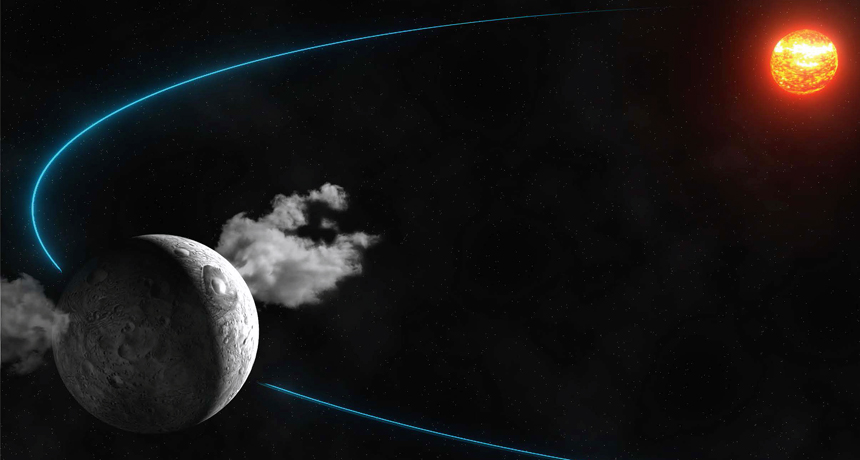Dwarf planet Ceres gives off gassy water

Water escapes from two spots on Ceres' surface as the dwarf planet orbits the sun in this artist’s impression.
IMCCE-Observatoire de Paris / CNRS / Y. Gominet, B. Carry

Water escapes from two spots on Ceres' surface as the dwarf planet orbits the sun in this artist’s impression.
IMCCE-Observatoire de Paris / CNRS / Y. Gominet, B. Carry